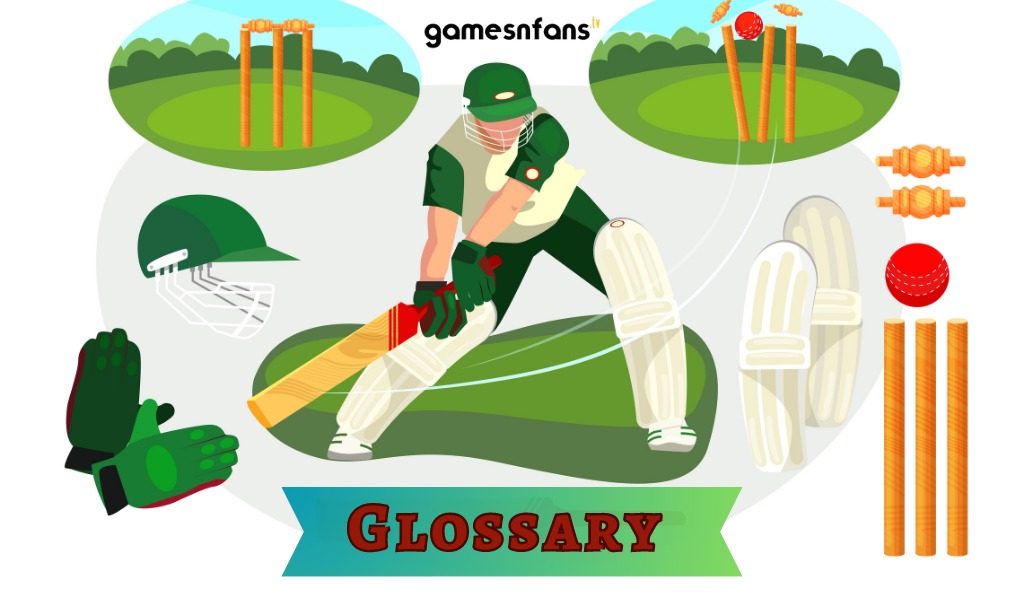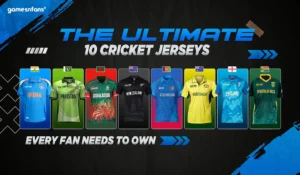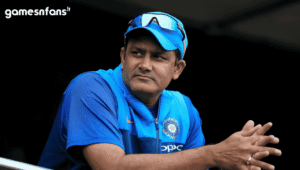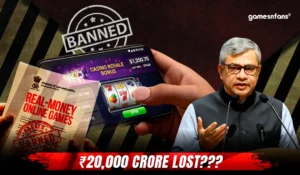Glossary Of Cricket

Glossary of Cricket
In order for any discipline to thrive, it necessitates condensing complex concepts into simple and concise words that capture its essence.
The same principle applies to the game of cricket.
Cricket has evolved into a well-established game with its own unique terminology. However, even after 400 years of a rich and storied history, new words continue to emerge regularly, leaving us perplexed and bewildered. Whether we’re newcomers or devoted fans, we often encounter unfamiliar words while watching the game, causing confusion and hindering our understanding .Despite our familiarity with the concept, as an audience, we often find it challenging to understand the game due to its constantly evolving vocabulary of words. We are here to bridge this gap for you, whether you are a beginner or an ardent fan grappling with new jargon. This article comprehensively covers everything, presenting the complete vocabulary of cricket distilled to its fundamental concepts, accompanied by clear and straightforward explanations. By breaking down the game’s terminology into its core concepts, we empower you to fully engage with the sport and enjoy it to the fullest.
Without further delay, let us embark on a captivating journey into the world of cricket’s glossary.
Fundamental nomenclature
Batsman
A player whose strong point in batting or the player who is currently playing on the ground
Bowler
A player who’s strong point is bowling or the player who is currently bowling at the ground.
Boundary
The edge of the field is usually marked with rope which defines the area of the ground that is officially the playing area.
Catch
When a fielder catches the ball without a single collision of ball from the ground after hitting the bat.it results in a wicket.
Century
A moment of satisfaction and a coming sweet good night for the batsman is what a century is for the batsman
A batsman scoring 100 runs in any format of cricket
Cricket is termed as a century.
Death overs
Death overs are the last few overs in a limited overs match, specifically last 3-4 overs in T-20 match and last 10 overs in an one-day international match.
Dismissal
When a bowler makes a batsman go back to pavilion through any of the various forms of getting out.
Direct Hit
Normally a ball thrown by a fieldsman is collected at the stumps by another fields man but when a throw directly hits the stumps without any involvement on other player that results in a direct hit.
Dot Ball
A delivery bowled by the bowler in which no runs are taken off by the batsman is termed as dot ball.
Drinks
Short breaks between the matches in which players drink water and take a rest for a few moments.
Dug Out
This is the area outside the Playing ground where the team members and coaches sit during the play.
End
The two sides of the pitch need to be named differently, these two sides are denoted by two different names that are known as two different ends.
Extra
Runs which are gifted to the batting team by the bowling side are the extra runs.
Runs due to wide balls, no balls etc. collectively come under extras.
Fielder
Fielder is a player who obstructs and catches the ball when hit by a batsman for runs.
Footmarks
The batsman and bowlers wear shoes embodied with spikes for better grip from the ground, these spiky shoes create marks in the playing crease which are termed as footmarks.
Footwork
For getting into a good position to defend or hit the ball in controlled manner the batsman changes there stance through moving there foots, the term footwork is used for this act.
A good batsman always has great footwork because of which he always comes in better position to handle the incoming ball.
Grounds Man
They are the ones who manage the pitch and outer fields. They can convert the pitch according to circumstances to give an edge to a team over the other team, thus grounds men are a vital part of the cricket ecosystem.
Half Century
A batsman scoring 50 runs in a match is a half centurion.
Helmet
Helmet is a protective cover which batsman and wicket keepers wear for their safety against the coming bullet speed balls.
Innings
In limited overs cricket matches, an inning is the one phase of the match which is completed when one of the two teams plays all overs or gets all out in between.
Wicketkeeper
Wicketkeeper is a fielder playing for the bowling team who stands behind the stumps to collect the incoming ball from the bowler.
He is one of the most crucial fielders who looks for catches coming from the thin edge of the batsman, or the chances of stumping him/her behind the stumps.
Leg Side
Whole cricket ground is divided into two parts from the viewpoint of the batsman: Off side and leg side
There is no absolute off and leg side ,both the terms are relative to the type of batsman batting on the field.
It’s always the side of non-dominant hand of the batsman facing the bowler.
For a right handed batsman it’s the left side of the field and for the left handed batsman it’s the right side.
Limited Overs Match
International matches are played all over the world in three formats :The tests, one day internationals ,twenty twenty overs.
One day internationals and T20 matches are known as limited overs matches as there are a fixed number of overs to be bowled here.
Lower Order
The batsmen who are coming in the last of the batting order are lower order batsmen.
Man Of The Match
Man of the match is the title given to the best playing player after the match ends.
Meat Of The Bat
The thickest part of the bat is considered as the meat of the bat.
Middle Order
The section of the batting order which is filled with all rounders and hard hitters is the middle order.
Normally number 5 to number 7 batsman are the middle order batsmen.
Nets
The term “nets” refers to the practice area where batsmen and bowlers refine their skills before a match. The practice area is named “nets” because it is enclosed by nets that prevent the ball from escaping. This setup allows players to focus on their practice without worrying about retrieving the ball after each delivery.
No Ball
No ball as the name suggests is an illegitimate delivery which when bowled by a bowler results in an additional run to the batting team which most of the time combines with a free-hit ( simply a license to punish the bowler )
Nightmare for a bowler.
Non Striker
The batsman standing at the bowling end.[2]
One Day International (ODI)
A match between two national sides limited to 50 overs per innings, played over at most one day.
Opener
As the name suggests an opener is a player who opens or starts the game for their team
An opening batsman starts the batting order of the team, whereas an opening starts the bowling order of the team.
Over
An over comprises six deliveries bowled by a player from the bowling team.
An interesting fact :All the players from the bowling team can bowl and over but the wicketkeeper can not bowl an over in an international match.
Over Rate
The average number of overs bowled per hour.
Pitch
The main area inside the ground where the bowler bowls to the batsman.
The dimensions of the pitch are internationally standardized to 22 yards in length and 10 ft in width.
Run
The basic unit of scoring in cricket is run. The team which makes more runs hence more score wins the match .A single is completed by the running of both the batsman present on the pitch from one end to the other with at least some part of their bat touching the line on the other side of the crease.
Top Order
The batting team can be loosely divided into three sections: the top order, middle order, and tail-enders. The top order consists of players who specialize in batting, and they bear the responsibility of providing a strong start.
Twenty20 (or T20)
Internationally, cricket is played in three different formats: Test matches, One Day Internationals (ODIs), and Twenty20 matches. Twenty20 matches are the shortest format.
As the name suggests it’s a 20 over match played between two teams with each team allocated 20 overs for both batting and bowling.
Uncapped Player
A player is uncapped when he hasn’t played his/her debut match internationally.
Unorthodox
Orthodox bowling and batting stands for the older classical ways of bowling whereas unorthodox are the techniques of batting, bowling which are developed later in the game by different players.
Umpire
An official assigned by the cricket board members ,who is responsible for the implementation of the laws of cricket in an ongoing cricket match.
They are the supreme authorities on taking live decisions in a cricket match.
Wicket
The wooden sticks which are grounded in the crease with bails(wooden sticks) on them are collectively called wickets.
According to ICC, the wickets are also standardized with the length of 28 inches and equal space between the sticks such that the ball can not pass the wickets.
Wide Ball
Again an illegal delivery which results in an additional run for the batting team
It is called off by the umpire when the ball is delivered too wide for the batsman to reach it.
Read Also: Types of Bowling in Cricket
Rules and guidelines
Draw
The meaning of draw is different in different formats of the game.
In test match:
If the batting team is unable to score the required runs in the fourth innings before the end of the day 5 and the bowling team is unable to take all the wickets down of the batting team in the 4th innings then the match is said to be a draw.
In limited overs match:
If the scores of both the teams are levelled out after the end of both the innings then the match is said to be a draw.
Free Hit
Free hit is an additional ball which the bowler has to bowl in his/her over in which the batsman can not be called out even if he is bowled or catched out.
It is called out when :
A bowler has stepped his foot outside the line of bowling
A bowler has thrown the ball over the waist height of the batsman without any bouncing off from the ground.
Hat-trick
When a bowler takes 3 wickets in 3 consecutive deliveries, it’s called a hat- trick.
If the bowler has taken 2 wickets on the last 2 deliveries of his over then the hat trick ball will be delivered in the next over.
Hit Wicket
When a batsman hits his own wickets through stepping or bat’s contact. He is dismissed by the hit wicket.
Leg Bye
When the batsman scores a run without hitting the ball with the bat.
In other words when the ball hits the batsman’s body or protective gear and the batsman takes a run on it, then those runs are counted as leg byes.
Leg byes are counted in extra runs.
Maiden Over
When the bowler bowls all 6 deliveries as dots in his over. He is said to have bowled a maiden over.
No -Ball
A no ball is an illegitimate delivery, when bowled by an extra run is awarded to the batting team, even with the consequence of free hit in some cases.
The umpire decides whether a bowl is fair ball or no ball.
Obstructing The Field
A rare way of dismissal of the batsman is obstruction in the field.
When the batsman intentionally tries to create obstruction in the fielding of the bowling team then the umpire can signal him out for obstructing.
Overthrows
Overthrows are extra runs for the batting team which happens when the fielding team is unable to collect the ball at wickets and then the batting team runs for more runs on that midfield.
Third Empire
Apart from the two umpire judicials a third umpire sits outside the ground with new age technology.
He is the one whom the infield umpires reach too when they don’t have a clear opinion in any circumstances in a match.
Technical terms
Batting Average
Batting average is the overall runs scored by the batsman in his all played innings divided by the number of innings he played.
Usually great batsmen have a batting average of more than 50,which means on average they have scored 50 runs in almost all the matches they have played.
Duckworth Lewis
When the match is obstructed in any circumstance and can’t be played till the last over. The official cut down the overs of play and projects a to achieve in the cut down overs.
The projected score is calculated using duckworth lewis method.
It is a mathematical model that predicts the project score in a game.
DRS
In this high technology world, cricket is not going to be left alone standing behind.
DRS stands for Direct Review System, basically it’s a technology driven process which the umpires use for giving the right decision in the game.
Also if any of the team is not satisfied with umpires decision they can opt for DRS through the third umpire under 15 seconds of timing
Economy Rate
As the batsman is judged by his batting average a bowler is judged by his economy rate.
The average number of runs a bowler concedes in an over is his economy rate.
LBW
LBW stands for leg before wicket. Its a method of dismissal of a batsman. When the ball hits the leg of the batsman without any contact from the bat and the batsman is standing in front of the wickets the umpire can signal him out using LBW as the cause that is if the leg of the player hasn’t come in between the ball and wickets then probably he has been bowled by now.
Required Run Rate
Required run rate is the number of runs the batting team needs to score per over to score more runs than the bowling team and win the match.
Strike Rate
Batting strike rate denotes the percentage of the runs a batsman scores per ball bowled.
Thus a strike rate of 200 means that on each ball of the bowler the batsman made 2 runs from it.
FIELDING POSITIONS
Cover
A player almost making 60 degree angle with the line joining the two stumps on the off side inside the circle is a cover. He is responsible for covering the famous cover drive from a batsman.
Deep Backward Square Leg
As the name suggests, a fielder placed behind the square leg closure to the boundary in the leg side direction is named deep backward square leg.
Deep Extra Cover
The word “deep” in cricket is a synonym for “far away”.
So a fielder in deep is a fielder placed far away towards the boundary in the line of the typical position.
Therefore a deep extra cover is a field placed far away from extra cover in its line towards the boundary.
Deep Fine Leg
Fielders placed behind the regular fine leg fielder towards the boundary.
Deep Midwicket
Fielder placed behind the regular midwicket fielder towards the boundary.
Deep Square Leg
Fielder placed behind the regular square leg fielder towards the boundary.
Fine Leg
Shots hitting finer to the square leg positions are saved by a fine leg fielder on the boundary.
Slip
A region behind the batsman close to the wicketkeeper. The prime reason for placing a fielder here is to catch the incoming chances of edges from the batsman’s bat.
Gully
A catching position used for catching shots that are hitting square of the wicket in which the fielder is placed beside the off side slip players.
Leg Gully
The same position as of gully on the leg side is leg gully.
Long Off
It’s one of the crucial positions especially in shorter formats of cricket when a batsman tries to hit hard and straight.
A player standing at the boundary on the off-side in front of the batsman is long off.
Long On
The similar position as long-off on the on-side (leg side) is long on fielding position.
Mid-Off
A fielder standing close to the stumps as compared to the long-off in the same direction straight ahead of the bowler is mid wicket position.
Mid-On
Again located straight ahead of the bowler on the leg side, the same way as a mid off player is standing.
Midwicket
As the name suggests the middle of wickets.
A player standing halfway between the square leg and mid-on.
Point
A player standing on the edge of a 30 yard circle almost perpendicular to the line joining the two wickets in the off-side direction.
Silly Point
Now imagine a point fielder standing too close to the batsman inside the 30-yard circle, he must be silly.
That’s the position of a silly point.
Short Extra Cover
An extra cover is a player placed between the covers and the mid-off fielder, when this player is brought closer to the batsman depicting an attacking position for a catch then it is known as short extra cover position.
Short Fine Leg
Short in cricket is a synonym for close to the batsman.
All the short positions are typical positions closure to the batsman.
Therefore a player standing closer to the batsman on the fine leg position is a short leg.
Short Midwicket
A player standing close to the batsman in line of midwicket.
Short Square Leg
A player standing close to the batsman in line of square leg.
Square Leg
A fielding position towards the square of the batsman in the 30 yard circle. Short leg fielder stands close to the short leg umpire.
Third Man
A player standing at the boundary behind the third slip position is the third man fielder.
Batting jargon
Duck
A batsman getting out at a score of zero is what duck means.
A batsman getting out on the very first delivery he is facing is said to be a golden duck.
Cut
When a batter gets a bowl outside off stump, it gives him the necessary area to open his arm wide and slice the ball, this batting shot is known as cut.
Drive
Drive is a cricketing shot which is aesthetically pleasing to the eyes. Batsman using the front foot, timing and proper technique guides the ball straight down the ground towards the boundary.
Flick
A perfect demonstration of power and elegance that the wrist of a good batsman holds. When the ball is bowled towards the pads the batsman uses the wrists and flicks it off towards the leg side for the boundary.
Forward Defence
Forward defence is a defensive shot played by the batsman usually in test cricket. Here the batsman brings out his front foot and then by opening the face of the bat play the incoming ball with soft hands.
Glance
Similar to the flick shot, the batsman uses the flick of the wrist to gradually direct the ball towards leg side.
When the ball is incoming slightly towards the leg side, the pace of the ball is used and glanced towards the leg side.
Helicopter Shots
Mahendra Singh Dhoni’s trademark shot which involves a combination of flick and a slog.
The perfect combination of quick wrist and a strong bottom hand the bat moves like a blade of a helicopter, surely MSD things.
Hook
An answer to the scary bouncers, hook shots have always been at the top cricketing shots against a fast bowler. When a short ball is bowled over the leg stump ,the batsman comes to the backfoot and hits the ball towards the leg side.
Lofted Shot
A shot played in air with the risk of fielders catching the ball is a lofted shot
Opening batsman
The batsman who opens the innings of the batting team.
Upper Cut
Upper cut is a cricket shot in which a slightly off side bouncer is sliced away at full strength towards the third man boundary.
Bowling jargon
Arm Ball
An extra effort is added to the delivery of the ball with the help of the arm, which results in a faster, quicker delivery compared to the normal pace of spin bowlers.
Bouncers
By pitching the ball at a short length, bouncers can do more harm than getting a wicket. Still, it is one of the most crucial deliveries for a pace bowler to prove his/her domination in the game.
Carrom Ball
The specialty of this bowling variation is that no one knows how the ball is going to behave after leaving the hands of the spinner. It can be a googly, can be a doosra, can be a normal skid ball, etc.
Economical
An economical bowler is a bowler who concedes less runs as compared to other bowlers in an over.
Doosra
The doosra looks like a normal off-spin ball until it bounces off the pitch. Instead of going from left to right, the ball starts spinning from right to left, like a leg-spin ball (from the bowler’s viewpoint).
Full Toss
A delivery that reaches directly to the batsman without any contact from the ground.
Flipper
Usually, a short delivery bounces off the pitch and creates a good chance for a batsman to hit it for a boundary. But the flipper doesn’t bounce as much as expected from the batsman and skids through the batsman, resulting in an LBW or bowled.
Googly.
What’s a doosra for an off-spinner is a googly for a leg-spinner.
Inswinger
The ball moves towards the batsman in the air after it has been released.
Leg break
A ball bowled outside leg stump that spins to the off side is what a leg break is.
Leg cutter
A type of slower bowl with fingers rolled over the seam. Similar to a leg spinner, the ball moves from right to left (from the bowler’s viewpoint).
Off break
The off break or an off-spin ball spins towards the stumps for a right-handed batsman
Out swinger
The ball moves away from the batsman in the air after it has been released
Off-Cutter
A type of slower bowl with fingers rolled over the seam. Same as an off-spin ball, the ball moves from left to right (from the bowler’s viewpoint).
Slider
Another variation that skids down the batsman and creates the chance of LBW is the slider. The grip here is almost similar to the leg-break delivery, but the wrist of the bowler comes into play, and the angle of release is slightly different from the normal release point.
Frequently asked questions (FAQs)
Q- What is mankading?
A- A very rare mode of dismissal of a batsman, mankading is argued all over the world as this method appears against the fair play and spirit of our gentleman’s game.
While a bowler is on his run-up for bowling if the batsman on the non striker’s end move out of the crease line he can take off the bails of the stumps on the r
Q- Is gully an Indian term ?
A- No clear evidence exists on the origin of this term but the term was popularised first by the England cricket team and was officially recognised in the early 20th century.
Q- Which authority decides and modifies the laws of cricket?
A- MCC, also known as Marylebone Cricket Club, has a significant historical role as cricket’s former official governing body, a position now held by the International Cricket Council (ICC). It retains exclusive copyright over the Laws of Cricket, granting them the authority to make amendments.
It does not have sole authority to change the laws of cricket. Instead, they engage in thorough discussions and consultations with the ICC and other relevant organisations when considering amendments to the laws.







